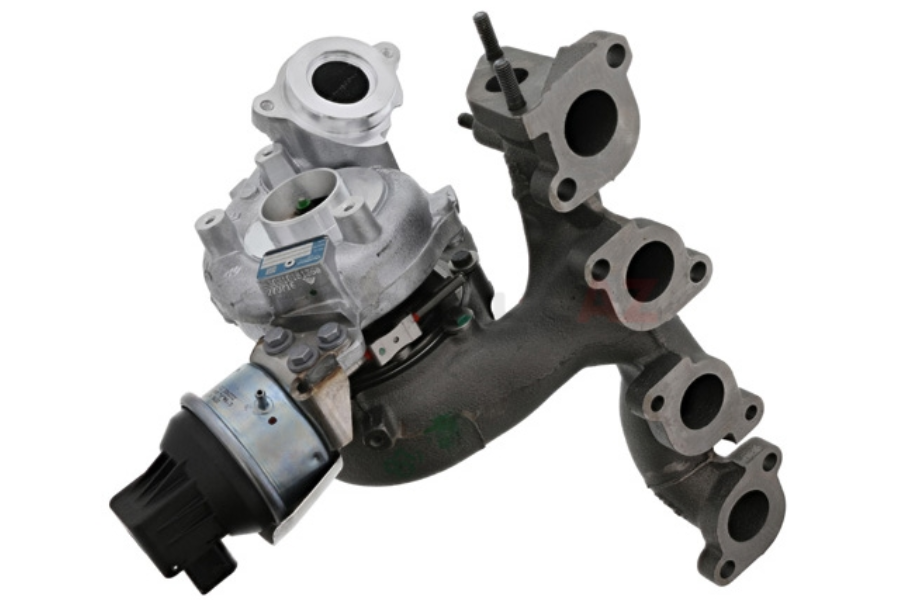In today’s financial landscape, various tools are employed by companies, investors, and institutions to manage risks, control cash flow, and boost returns. Among these instruments, the Naomi swap has become increasingly significant. But what exactly does a Naomi swap entail, and how does it fit into the broader spectrum of financial agreements?
Introduction to Naomi Swap?
A Naomi swap is a type of financial contract where two parties agree to exchange cash flows that are tied to different financial instruments or obligations. Similar to other swaps like interest rate swaps or currency swaps, Naomi swaps facilitate the transfer of specific financial benefits between the two involved entities.
The key characteristic of a Naomi swap lies in its structure, which usually involves the exchange of cash flows based on the performance or value of different assets. These assets can range from interest rates, commodity prices, and stock values to more intricate financial instruments.
How Does a Naomi Swap Operate?
Let’s break down the workings of a Naomi swap to gain a better understanding:
Terms of the Swap Agreement
In a Naomi swap, two parties (known as counterparties) enter into an agreement to swap cash flows over an agreed-upon duration. Both sides agree to make or receive payments based on the performance or market fluctuations of an underlying asset.
Assets Involved in the Swap
Naomi swaps involve various types of assets. For instance, one party may agree to pay a fixed amount based on a specific interest rate or a stock’s performance, while the other party may make payments based on a floating rate or other variables.
Structure of Payments
Payments between the two parties are generally structured to occur at regular intervals—such as monthly, quarterly, or annually—depending on the terms outlined in the agreement.
Purpose:
Naomi swaps are typically used as a strategy for managing risks related to asset value changes. They help parties hedge against market fluctuations or capitalize on potential gains in certain areas.
Different Variations of Naomi Swaps
Naomi swaps can come in different variations, based on the nature of the agreement and the assets involved. Some of the prominent types include:
Fixed vs. Floating Interest Rate Swap
This is one of the most common variants, where one party agrees to exchange a fixed interest rate payment for a floating interest rate payment. The floating rate is often linked to a benchmark rate, such as LIBOR (London Interbank Offered Rate).
Stock and Equity-Based Naomi Swap
In this case, the cash flows are tied to the performance of stock portfolios or equity indices. One party may exchange the returns from a specific stock portfolio for payments based on the performance of another party’s portfolio.
Commodity Price-Based Naomi Swap
This type of swap involves the exchange of cash flows tied to commodity prices such as oil, gold, or agricultural goods. It is often used by businesses engaged in commodity markets to protect against price volatility.
Foreign Exchange Rate Naomi Swap
A currency-based Naomi swap involves cash flow exchanges related to currency exchange rates. It can help multinational corporations mitigate the risks of currency fluctuations when conducting international business.
Credit Risk and Default-Based Naomi Swap
This variation ties the exchange of payments to the creditworthiness of a particular entity. The payments are contingent upon whether the entity defaults on its obligations.
Naomi Swaps and Risk Mitigation
One of the main reasons Naomi swaps are widely used is for risk management. Here’s how these financial instruments help businesses and investors manage various risks:
Managing Interest Rate Risk
For companies or investors with debt or fixed-income investments, Naomi swaps help manage interest rate risk. For example, a company with a loan at a floating interest rate may enter into a Naomi swap to exchange variable-rate payments for fixed-rate payments, ensuring more stability in their cash flow.
Market Volatility
Market fluctuations, particularly in equities, commodities, and currencies, can be highly unpredictable. Naomi swaps offer a way to offset the risks of these volatile market movements by locking in more stable cash flows.
Currency Exposure
Multinational corporations dealing with cross-border trade often face risks due to currency fluctuations. Currency-based Naomi swaps can help such companies hedge against adverse exchange rate movements.
Managing Credit Risk
In situations where a counterparty’s creditworthiness is a concern, a credit default Naomi swap can provide protection against the risk of default by the other party.
Advantages of Naomi Swaps
Naomi swaps offer numerous advantages to the participants, making them a valuable tool in finance:
Reduced Risk
One of the primary benefits of Naomi swaps is their ability to mitigate exposure to various types of risks. Whether dealing with interest rate risk, commodity price changes, or currency fluctuations, Naomi swaps offer more predictable cash flows, thus reducing the impact of these risks.
Flexibility
Naomi swaps are highly adaptable. The terms can be customized to meet the specific requirements of the involved parties, including asset types, payment schedules, and the length of the agreement.
Affordable Risk Management Strategies
Compared to more complex financial strategies or insurance products, Naomi swaps offer a more affordable way to hedge against risks. Typically, the counterparties only need to exchange cash flows, not actual assets.
Optimizing Capital Utilization
Naomi swaps allow companies to reduce the capital they need to set aside for risk mitigation, as the swaps themselves provide the coverage required to guard against potential losses.
Opportunities in New Markets
For entities looking to enter new markets or hedge against unfamiliar assets, Naomi swaps offer a mechanism to gain exposure to various financial instruments without making direct investments.
Risks Involved in Naomi Swaps
While Naomi swaps present considerable benefits, they also come with certain risks:
Risk of Default by Counterparties
Naomi swaps involve two counterparties, so there’s always the risk that one of the parties may default on their obligations. This could result in significant losses for the other party involved in the contract.
Exposure to Market Fluctuations
Naomi swaps are highly sensitive to market movements. If the market moves against one party, they may incur significant financial losses.
Challenges with Liquidity
Some Naomi swaps may not be easily traded or unwound before their maturity date, meaning that if circumstances change, it could be difficult to exit a position.
Intricacies and Complexity
Naomi swaps can be intricate financial tools, and their terms may be challenging to comprehend for individuals without advanced financial expertise. Thus, proper risk management and expert guidance are essential when entering into these agreements.
Key Facts about Naomi Swap
- Purpose of Naomi Swaps
Naomi swaps are primarily used as financial tools to manage risk. They allow parties to exchange cash flows based on the performance of different assets, such as interest rates, stock prices, or commodity values. This helps to hedge against market volatility and asset value fluctuations.
- Flexibility in Structure
Naomi swaps are highly customizable, meaning their terms can be adjusted to meet the specific needs of the counterparties. The underlying assets, payment schedules, and duration of the swap agreement can be tailored for optimal risk management and hedging purposes.
- Types of Naomi Swaps
There are various types of Naomi swaps, including interest rate swaps, equity swaps, commodity swaps, currency swaps, and credit default swaps. Each type is designed to address different types of financial risks related to interest rates, stocks, currencies, commodities, or credit.
- Mitigating Financial Risks
Naomi swaps are used to manage a variety of financial risks, such as interest rate risk, market volatility, currency risk, and credit risk. By entering into a Naomi swap, businesses or investors can stabilize cash flows and protect themselves from adverse market movements.
- Counterparty Risk
Like any financial agreement, Naomi swaps involve counterparty risk, which means there’s always the possibility that one of the parties may default on their obligations. This risk needs to be managed carefully, particularly when engaging in swaps with parties whose financial stability may be uncertain.
Final Thoughts
Naomi swaps serve as a crucial financial instrument for companies, investors, and institutions looking to manage risk and optimize cash flow. By facilitating the exchange of cash flows tied to various assets, these swaps provide flexibility, cost-effective hedging, and access to diverse markets. However, just like any financial tool, Naomi swaps carry risks that must be carefully evaluated before entering into an agreement.
For businesses and investors seeking to manage exposure to market fluctuations, interest rate shifts, or currency volatility, Naomi swaps can become an indispensable part of their financial strategy. By understanding their workings and weighing their potential benefits and risks, entities can make informed decisions and navigate the financial world with greater confidence.
FAQs about Naomi Swap
- What is the main benefit of entering into a Naomi swap?
The main benefit of a Naomi swap is risk management. It allows parties to exchange cash flows based on different assets, helping to hedge against market volatility or fluctuations in interest rates, stock prices, commodities, or currencies.
- Who typically uses Naomi swaps?
Naomi swaps are commonly used by corporations, investors, and financial institutions. They are particularly useful for businesses looking to manage risks associated with fluctuating interest rates, foreign exchange rates, and commodity prices.
- How do Naomi swaps help with currency risk?
Naomi swaps can be structured to exchange cash flows based on changes in currency exchange rates. This helps multinational companies hedge against the risks of unfavorable currency movements when conducting business internationally.
- What is the difference between a Naomi swap and other swaps like interest rate swaps?
Naomi swaps are a broad category of financial swaps, encompassing various types such as interest rate swaps, equity swaps, commodity swaps, and more. The key difference lies in the underlying assets and the specific type of risk being managed in each case.
- Are Naomi swaps risky?
While Naomi swaps offer numerous benefits, they do come with certain risks. These include counterparty risk (the possibility of default by one of the parties), market risk (sensitivity to market changes), and liquidity risk (difficulty in unwinding positions). Careful management and expert advice are essential when entering into these agreements.
Stay in touch to get more news & updates on Get Break News











